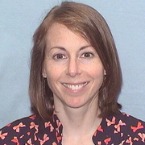By: Lindsay May, MD, FAAP, FRCPC & Shaji Menon, MD, MS, FAAP, FACC, FASE
An 8-year-old child playing their first season of peewee football goes into cardiac arrest suddenly after practice. A 10-year-old's heart stops beating just as they takes their long-awaited turn down a water park slide. A 14-year-old student sitting in math class falls to the floor unresponsive. A 16-year-old high school basketball player collapses on the court after making the game-winning shot.
Sudden cardiac arrest is rare in young people, but it can happen. According to the Centers for Disease Control and Prevention (CDC), about 2,000 young, seemingly healthy people under age 25 in the United States die each year of sudden cardiac arrest. These deaths leave behind a huge and devastating impact on families and communities. But there are ways to help identify risk factors that can help prevent these tragedies. Read on.
What is sudden cardiac arrest?
Sudden Cardiac Arrest (SCA) is a life-threatening emergency that happens from an "abrupt and unexpected loss of heart function leading to loss of consciousness and collapse." SCA can be fatal if not treated within minutes. Survival outside a hospital depends on people nearby
calling 911, along with prompt bystander emergency response such as using CPR and automatic defibrillators.
Are there warning signs for sudden cardiac arrest before it happens?
When SCA happens to seemingly healthy young people, there is usually no obvious injury or medical reasons the patient or family knew about. Some young people who suffer SCA may have previously experienced heart-related symptoms, such as shortness of breath, chest pain or
fainting, that weren't thought to be anything life-threatening. Others never had any symptoms of heart problems until the SCA event.
When can sudden cardiac death happen to young people?
Sudden cardiac arrest is thought to be a leading cause of death in young athletes, but it also affects young people not involved in organized sports. It can happen during exercise or at rest, or even during sleep. In some cases, young people can die from sudden cardiac arrest days or weeks later from brain damage that happened during the SCA.
What causes sudden cardiac arrest in young people?
Not all causes of sudden cardiac arrest in children and young adults is known, but may include:
Hypertrophic cardiomyopathy. Usually inherited and often undiagnosed, this is the most common cardiovascular cause of SCA in young people. Muscle cells in the heart's lower chambers, called ventricles, thicken. This can cause abnormal heart rhythm, especially during exercise. Other types of
pediatric cardiomyopathy may also play a role.
Coronary artery abnormalities. Defects in the way the coronary arteries connect to the heart can lead to decreased blood supply to heart muscle during exercise and cause cardiac arrest. Young people with coronary artery abnormalities usually are born with them but may not notice any symptoms until they are older.
Primary arrhythmias. In people with structurally normal hearts, sudden cardiac arrest can sometimes be caused by undiagnosed genetic conditions that affect the heart's electrical impulses. For example, these include:
Arrhythmogenic right ventricular dysplasia (ARVD). With this inherited condition, some of the heart's muscle tissue gets replaced with scar tissue.
Myocarditis. Usually triggered by an infection, myocarditis means the walls of the heart are inflamed. Most myocarditis cases in children happen when a virus such as an
enterovirus gets into the heart. It can also be caused by bacterial, fungal or parasite infections, and allergic reactions to some medications.
Marfan syndrome. This connective tissue disease can lead to tears in the heart's aortic blood vessel. People born with the condition, who tend to be tall and have long arms, may not realize they have it.
Commotio Cordis is caused by a blow to the chest directly over the heart at certain points in the heartbeat cycle. It can happen in kids with completely normal hearts. Commotio cordis is more common in sports with projective objects such as baseball, ice hockey and lacrosse.
Are there ways to help prevent sudden cardiac death?
There are steps families and communities can take to lower their risk of sudden cardiac death in young people:
Regular well-child visits and sports physicals. All children need regular
wellness visits with their doctor. These visits are a chance to get a complete physical exam and detailed
health history to help identify risk factors that may contribute to SCA.
Pre-participation exams also are important, even if a child is not involved in organized sports because gym class and recreational activities can―and should―involve plenty of
exercise! A screening form that can be completed anytime by patients and parents with their doctor, to help decide whether a visit with a
specialist is needed.
Know your family history. Gather the heart health history of blood relatives (children, siblings, parents, aunts and uncles, nieces and nephews, grandparents and cousins), and share with your pediatrician. This can help guide questions during well-child check-ups and sports physicals.
Community life support training & automated external defibrillators. The AAP supports age-appropriate life-support training, including
CPR, for students and school staff. It also encourages having automated external defibrillators (AEDs) near athletic and training facilities. In cases of sudden cardiac arrest, AEDs can quickly deliver an electrical shock to return the heart rhythm to normal.
Should all young people be screened for sudden cardiac arrest risk?
Performing mass screening
tests like electrocardiogram (EKG) and echocardiogram (ultrasound of heart) for all young people or in athletes to identify risk factors for sudden death is not currently recommended. The concern is that high false positive test results can cause unnecessary anxiety and additional testing. Also, not all events can be picked up by these tests.
However, recognizing warnings signs and risk factors, accurate medical history-taking, and cardiology and
genetic screening for patients at higher risk because of family members with concerning heart conditions or an SCA, can be very effective ways to help reduce the risk of sudden death.
What's the outlook on sudden cardiac arrest statistics in the young?
There is a lack of reliable information about the incidence and cause of sudden cardiac death in young people. However, the CDC has established a
Sudden Death in the Young Case Registry for babies, children and young adults up to age 20. The goal of this registry is to help create a better understanding of how often and why SCA happens in young people—and how to help prevent it.
Remember
Although sudden cardiac death in young people isn't common, even one life lost is too many. Take steps that can help reduce the risk of these tragedies, such as scheduling regular well-child visits, sports physicals and encouraging CPR and AED training in your community.
More information
About Dr. May
 Lindsay May, MD, FAAP, FRCPC, is an Assistant Professor of Pediatric Cardiology and on faculty at Primary Children's Hospital, University of Utah. Her medical training was primarily in Canada, with her cardiology fellowship and advanced heart failure and transplant training done at Stanford University. Within the American Academy of Pediatrics, Dr. May is a member of the Section on Cardiology and Cardiac Surgery (SOCCS). Lindsay May, MD, FAAP, FRCPC, is an Assistant Professor of Pediatric Cardiology and on faculty at Primary Children's Hospital, University of Utah. Her medical training was primarily in Canada, with her cardiology fellowship and advanced heart failure and transplant training done at Stanford University. Within the American Academy of Pediatrics, Dr. May is a member of the Section on Cardiology and Cardiac Surgery (SOCCS).
|
About Dr. Menon:
 Shaji Menon, MD, MS, FAAP, FACC, FASE, is a Professor of Pediatrics and Radiology at Primary Children's Hospital, University of Utah and the Medical Director of Single Ventricle Survivorship Program at the University of Utah. Within the American Academy of Pediatrics, Dr. Menon is a member of the Sections on Cardiology and Cardiac Surgery and Child Death Review and Prevention, as well as a contributing author to
Common Cardiac Issues in Pediatrics. Dr. Menon is also a fellow of the American College of Cardiology and the American Society of Echocardiography. Shaji Menon, MD, MS, FAAP, FACC, FASE, is a Professor of Pediatrics and Radiology at Primary Children's Hospital, University of Utah and the Medical Director of Single Ventricle Survivorship Program at the University of Utah. Within the American Academy of Pediatrics, Dr. Menon is a member of the Sections on Cardiology and Cardiac Surgery and Child Death Review and Prevention, as well as a contributing author to
Common Cardiac Issues in Pediatrics. Dr. Menon is also a fellow of the American College of Cardiology and the American Society of Echocardiography. |